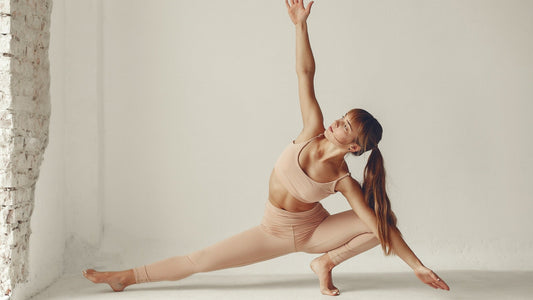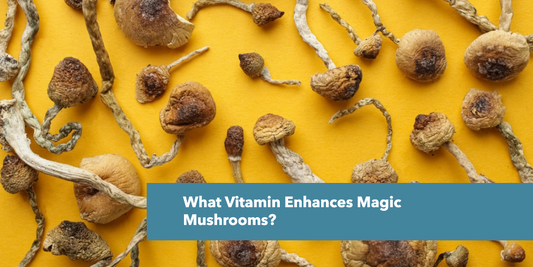When it comes to enhancing mental clarity, emotional balance, and overall vitality, microdosing is gaining ground as a powerful wellness tool. But to fully unlock its benefits, especially those tied to neuroplasticity and mood, pairing your microdose with mindful movement may be the missing link to deepening results and sustaining long-term change.
Whether you’re stretching through morning yoga or pushing through an afternoon ride, the synergy between psilocybin and movement offers a double-dose of support for both your mind and body. Physical movement has long been recognized as a key pillar of holistic health. When paired intentionally with microdosing, it becomes a catalyst for integration, presence, and transformation.
The Science of Microdosing + Movement
On a physiological level, microdosing psilocybin works by interacting with the brain’s serotonin receptors, encouraging neural flexibility, creativity, and emotional regulation. This subtle shift in brain chemistry supports new thought patterns and greater awareness, which are foundational to mental well-being. But there’s more: movement, especially aerobic or bilateral movement, can actually enhance the brain’s response and amplify microdosing’s therapeutic effects.
Wallace Murray explains that on microdosing days, combining your capsule with at least 20 minutes of brisk activity can help maximize the effect. Why? Because aerobic movement boosts brain-derived neurotrophic factor (BDNF), a protein that promotes brain growth, cognitive function, and cellular repair. This makes movement a powerful ally in neurogenesis and emotional resilience. When paired with psychedelics that already stimulate neural pathways, the two work synergistically to increase clarity and support a more resilient nervous system.
Mindful Movement: Rewiring with Intention
Not all movement is created equal. In fact, how you move is just as important as that you move. Slow, intentional practices such as Tai Chi, Qigong, yoga, or even expressive dance can deepen the microdosing experience by connecting breath, body, and awareness. These types of movement do more than stretch your muscles they engage your mind in a way that invites balance, self-regulation, and inner calm.
Holistic wellness expert Eliza Collins recommends movement that crosses the body’s midline or stimulates both brain hemispheres. These practices can include coordinated limb movements, bilateral drawing, or dance sequences that require rhythm and timing. Even a simple act like drawing abstract patterns with both hands at the same time can activate underused areas of the brain, fostering integration and internal harmony.
This type of mindful movement not only enhances neuroplasticity, it also grounds the microdosing journey in your body allowing insights and emotional releases to be processed in real time.
Athletic Performance and Flow States
Beyond mindfulness practices, movement also plays a significant role in enhancing athletic performance. Athletes and high performers are increasingly turning to microdosing to tap into flow states those moments of heightened focus, presence, and effortless performance. From long-distance runners and martial artists to CrossFit athletes and climbers, more people are experimenting with microdosing as a way to enhance endurance, sharpen mental clarity, and build emotional resilience.
There is growing anecdotal and clinical evidence that microdosing may support improved coordination, stamina, pain tolerance, and reaction time. This is especially true when movement challenges both the body and brain like learning a new skill or training in unpredictable environments. Amie Brooke notes that practices requiring focus, coordination, and body awareness such as dance, acro yoga, martial arts, or functional training may create the perfect conditions for neuroplastic growth.
Furthermore, movement also helps release emotional energy stored in the body. This somatic processing is key when working with psychedelics. As the mind begins to open and process unresolved feelings or thoughts, the body must also move and flow. Physical activity becomes a tool to regulate the nervous system and create space for integration.
Simple Ways to Pair Your Dose with Movement
The good news? You don’t have to overhaul your entire wellness routine to begin. Start small and build consistency. Here are a few ideas to explore:
-
Morning yoga or stretching while journaling your intentions
-
A brisk walk or hike in nature, phone-free
-
Light cardio like biking, swimming, or rebounding on dose days
-
Learning a new movement-based skill (dance, Pilates, martial arts)
-
Somatic practices like crawling, animal flow, or tai chi
-
Breath-led movement exercises sync your inhale with reach and exhale with fold
-
Grounding practices like barefoot walking, shaking, or swaying to music
Remember that movement is not just for fitness it is a way to reconnect to your own rhythm, intuition, and internal landscape.
The Bottom Line
Microdosing opens the door. Movement helps you walk through it with grace, strength, and presence.
By combining small, intentional doses of mushrooms with mindful or athletic movement, you invite greater clarity, creativity, and balance into your daily life. This pairing empowers you to move through emotional blocks, strengthen neural pathways, and anchor deeper into your body’s wisdom. It’s not about doing more it’s about doing differently, with awareness.
Your body is a vessel for healing. Let it move you and support your journey from the inside out.




